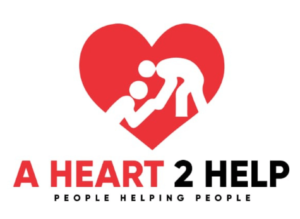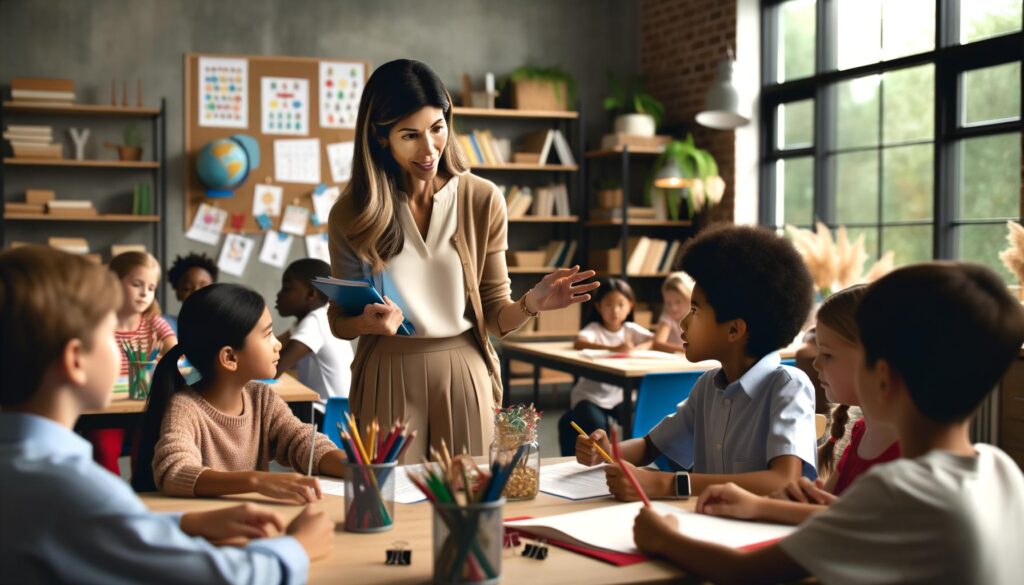Inclusive education is transforming classrooms worldwide, and paraprofessionals play a vital role in this shift. These dedicated professionals provide essential support to students with diverse needs, helping them thrive in mainstream educational settings.
At A Heart 2 Help, we recognize the importance of equipping paraprofessionals with the right tools and knowledge. That’s why we’ve created the Paraprofessional’s Handbook for Effective Support in Inclusive Classrooms, a comprehensive guide to navigate the challenges and opportunities in this crucial role.
What Do Paraprofessionals Do in Inclusive Classrooms?
The Multifaceted Role of Paraprofessionals
Paraprofessionals are the unsung heroes of inclusive education. They work tirelessly to support students with diverse needs, ensuring full participation in mainstream classrooms. These professionals provide one-on-one support to students with disabilities, adapt learning materials, and assist with behavior management. A study found that there is a lack of documented evidence related to the relationships existing between paraeducators and teachers working in early childhood education.
Facilitating Social Interactions
One of the key responsibilities of paraprofessionals involves facilitating social interactions between students with disabilities and their peers. Feldman & Matos (2013) discovered that paraprofessionals trained in specific techniques successfully promote social behaviors among students with autism. This aspect of their role contributes significantly to the social development of students with diverse needs.
The Measurable Impact of Paraprofessional Support
The benefits of having paraprofessionals in inclusive classrooms are substantial and quantifiable. A study examined the effect of explicit and engaging supplemental early literacy instruction on at-risk kindergarten children’s literacy development. This research underscores the potential academic impact of paraprofessional support.

Moreover, paraprofessionals play a vital role in implementing individualized education plans (IEPs). They collaborate closely with teachers to ensure students receive necessary accommodations and modifications for success.
Navigating Challenges in the Role
Despite their importance, paraprofessionals face several challenges. A major issue is the lack of clear role definitions. Wasburn-Moses, Chun, & Kaldenberg (2013) emphasize the need to clarify roles and provide individualized training to optimize paraprofessionals’ contributions.
Another significant challenge is the scarcity of adequate professional development opportunities. Barrio & Hollingshead (2017) highlight this issue, particularly in rural areas. This gap in training can hinder paraprofessionals’ effectiveness and, consequently, student outcomes.
Addressing the Need for Comprehensive Training
To overcome these challenges, schools and districts must invest in comprehensive training programs for paraprofessionals. These programs should focus on both instructional techniques and social interaction skills, as suggested by Feldman & Matos (2013). Effective training (which includes ongoing support and feedback) can significantly enhance the ability of paraprofessionals to support diverse learners in inclusive settings.
As we move forward, it’s clear that the role of paraprofessionals in inclusive classrooms is both complex and essential. The next section will explore strategies for effective collaboration between paraprofessionals and teachers, a key factor in maximizing the benefits of paraprofessional support.
How to Foster Effective Collaboration
Creating a Unified Team
Effective collaboration between teachers and paraprofessionals forms the foundation of successful inclusive education. The first step involves the creation of a unified team. This means breaking down hierarchical barriers and viewing paraprofessionals as equal partners in the educational process. A study found that the inclusion of paraprofessionals as integral members of the instructional team enhanced collaborative practices in classrooms significantly. For example, Mrs. Jones showed Ms. Simmons how she managed student schedules, provided individualized and group instruction, and supported students in the general education classroom.

To achieve this, schools should implement regular team meetings where both teachers and paraprofessionals have equal input. These meetings should focus on student progress, strategy adjustments, and sharing of observations. The unique insights of paraprofessionals, who often spend more one-on-one time with students, can provide teachers with a more comprehensive understanding of each student’s needs.
Defining Roles and Responsibilities
Clear communication and role definition prevent confusion and maximize efficiency. Wasburn-Moses, Chun, & Kaldenberg (2013) emphasize the need for individualized training and clear role definitions to optimize paraprofessionals’ contributions.
Schools should create detailed job descriptions for paraprofessionals that outline specific responsibilities, expectations, and boundaries. These descriptions require regular reviews and updates to reflect changing student needs and classroom dynamics. Additionally, the implementation of a system of daily or weekly check-ins between teachers and paraprofessionals can help address any role ambiguities promptly.
Investing in Professional Development
Professional development plays a key role in enhancing paraprofessional effectiveness. Unfortunately, Barrio & Hollingshead (2017) highlight a significant gap in training opportunities, especially in rural areas. To address this issue, schools must prioritize ongoing professional development for paraprofessionals.
Effective training programs should cover a range of topics, including instructional strategies, behavior management techniques, and social facilitation skills. Research has shown that training and coaching paraprofessionals has a positive effect on social interactions between pupils with ASD and their peers with medium impact.
Implementing Mentorship Programs
The implementation of a mentorship program allows experienced paraprofessionals to guide newcomers. This approach not only provides valuable on-the-job training but also fosters a sense of community and professional growth. Additionally, the offering of online training modules can help overcome geographical barriers and provide flexible learning opportunities.
Utilizing Technology for Collaboration
Technology can play a significant role in fostering effective collaboration between teachers and paraprofessionals. Digital platforms (such as shared online documents and communication apps) can facilitate real-time information sharing and coordination. These tools allow for quick updates on student progress, sharing of resources, and seamless communication between team members.
As we move forward, it’s essential to recognize that effective collaboration sets the stage for successful support of students with diverse needs. The next section will explore best practices for paraprofessionals in supporting these students, building on the foundation of strong collaborative relationships.
Empowering Students with Diverse Needs
Fostering Independence Through Gradual Support
Paraprofessionals can empower students with diverse needs by reducing support gradually. This approach, known as fading, helps students develop self-reliance and confidence. Recent studies have explored the development of teacher beliefs and ideas for adaptations with respect to students who display challenging behavior. Paraprofessionals should start by providing full support, then decrease assistance as the student gains proficiency. For example, if a student struggles with organizing materials, a paraprofessional can begin by fully assisting them, then transition to verbal prompts, and finally to visual cues.

Paraprofessionals should celebrate small victories along the way, reinforcing the student’s progress and motivation.
Tailoring Instruction to Individual Needs
Adapting instructional strategies and materials is essential to support diverse learners effectively. Universal Design for Learning (UDL) principles can guide this process. Recent studies have demonstrated the effectiveness of training for paraprofessionals to support students with disabilities in a meaningful way, particularly in rural communities.
Practical ways to implement UDL include:
- Offering multiple means of representation (e.g., visual aids, audio materials, hands-on activities)
- Providing various options for expression (e.g., written work, oral presentations, artistic projects)
- Engaging students through their interests and preferred learning styles
For instance, when teaching a math concept, paraprofessionals can use manipulatives for tactile learners, diagrams for visual learners, and step-by-step verbal instructions for auditory learners.
Creating a Positive Behavioral Environment
Managing behavior and fostering positive social interactions are important aspects of supporting students with diverse needs.
Effective behavior management strategies include:
- Establishing clear, consistent expectations
- Using positive reinforcement techniques
- Implementing behavior contracts for older students
- Teaching self-regulation skills
To promote positive social interactions, paraprofessionals can facilitate structured social activities, model appropriate social behaviors, and provide opportunities for cooperative learning.
Ongoing Training and Support
Implementing these best practices requires continuous training and support for paraprofessionals. Schools must prioritize professional development opportunities to ensure these strategies are effectively applied in inclusive classrooms. Paraprofessionals should seek out training programs (such as those offered by A Heart 2 Help) that focus on promoting independence, adapting instruction, and fostering positive behaviors to enhance the learning experience for students with diverse needs.
Final Thoughts
Paraprofessionals form the backbone of inclusive education, supporting students with diverse needs beyond academics. Their effectiveness depends on clear roles, strong partnerships with teachers, and continuous professional development. The Paraprofessional’s Handbook for Effective Support in Inclusive Classrooms provides comprehensive guidance for these essential educators.

Successful paraprofessional support requires a multifaceted approach. This includes fostering student independence, adapting instructional strategies, and creating positive behavioral environments. Increased investment in training programs and innovative support strategies will maximize the impact of paraprofessionals in inclusive classrooms.
A Heart 2 Help supports this evolution through our innovative care-app that facilitates community support. We remain committed to equipping paraprofessionals with the tools they need to meet the challenges of inclusive education. Their dedication will continue to shape the future of education, ensuring every student has the opportunity to thrive.

